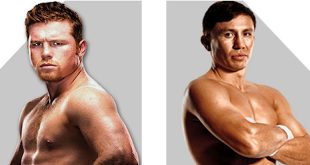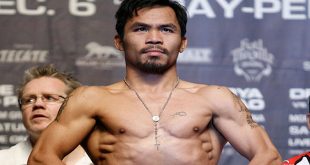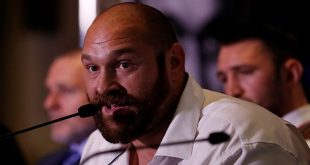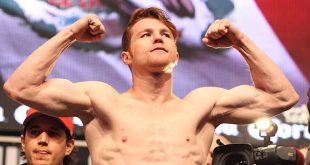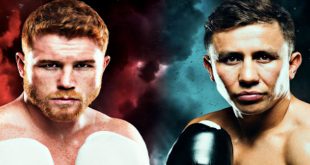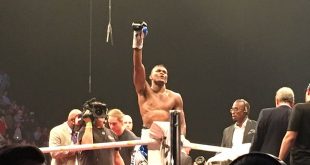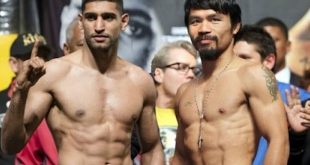 |
When I was eleven, the best movie ever came out. The Adventures of Huckleberry Finn (1960) showed in the theaters and was a great Walt Disney first. Having my mother reading us to sleep, one of our favorite stories continued night after night the Mark Twain classic. We all loved Big Jim in the book, and when we saw him on the screen |
for the first time, we just knew that this Jim appeared to us exactly like the book. The lovable giant in the movie showed us a big man, and a gentle man. Archie Moore played the kind Big Jim in the movie. We never guessed that this fellow really carried a past around with him: a record of 194 victims in the ring. Who believes in anyone ever coming close to the all time victim record in the ring? Who ever suspected that Huckleberry’s best friend showed no hint of the killing machine in the ring? His 141 career knockouts are still a boxing record, one considered unbreakable. After retiring from fighting, he stayed involved in boxing. He spent time training the likes of George Foreman (young and old), heavyweight contender Earnie Shavers, and the Nigerian Olympic boxing team. Born on Dec. 13, 1913 in Mississippi, he appeared a natural for the movie roll of Huckleberry Finn. With 229 bouts, he won 194 times, laying a foundation for an all time record of this number of victims.
They finally allowed him into the Hall of Fame in 1990, far past due for his ten year holding of the light-heavyweight belt from Dec. 17, 1952 until 1962. We missed his passing on Dec. 8, 1998, a long successful life of eighty-five years. He worked many years with the Boy Scouts of America. He also organized the program “Any Boy Can.” He felt compelled to help the youth of this country, since he got his rough start from reform school. He worked as a boxing commentator while he lived with his family until his death in San Diego, California. A wonderful man working with kids, just like Big Jim. The Ol’ Mongoose never left caring for kids. Archie Moore fought for an incredible twenty-seven years and knocked out more opponents-141 victims-than anyone else in the history of boxing. He became the light heavyweight champion at the age of thirty-nine and is the only man to have fought both Rocky Marciano and Muhammad Ali.
Moore, who turned pro in 1936, debuted in the world rankings as a middleweight in the early 1940’s. By 1945, Moore moved up to light heavyweight and although he was continually passed over for a title shot, he remained a fixture in the 175-pound rankings. Finally, in 1952, four days after his thirty-ninth birthday, Moore secured a shot against light heavyweight champion Joey Maxim. He won the title by decision and held onto it for nearly a decade. In 1955, Moore attempted to win the heavyweight title from Rocky Marciano. Although he dropped Marciano early in the fight, Marciano rallied and stopped Moore in the ninth round. A year later, after Marciano retired, Moore met Floyd Patterson for the vacant heavyweight crown but was stopped in five. He captured our hearts when he fought Marciano in 1955. In the ninth round when he hit the mat a couple of times to the relentless punishment from the gloves of Marciano, the crowds thought they heard him say, “What do I have to do to get this guy off of me?” Marciano beat the aged fighter into the floorboards a few minutes later.
Although he fell to bigger men, Moore was nearly unbeatable at light heavyweight. He made nine title defenses and engaged in memorable contests with Maxim, Yvon Durelle and Harold Johnson. In his first fight with Durelle, the Canadian challenger dropped more three times in the first round and once in the fifth round. But Archie responded by dropping Durelle in the seventh and knocking him out in the eleventh round. So he simply continued to battle bigger men. He knocked out former Olympic heavyweight champion Pete Rademacher in 1961 and was stopped by Ali in 1962. Moore’s age is listed as forty-nine at the time of the Ali fight, but some ring experts insist he was actually older since his date of birth has been disputed. Moore retired after one fight, a third-round TKO of Mike DiBiase in 1963. When he made the movie, he still fought for three more years after Walt Disney wanted him as Big Jim.
All totaled, Moore fought nine world champions and seven Hall-of-Fame fighters. He had multi-fight series with some of the game’s top fighters. He won four of five fights from Jimmy Bivins and Harold Johnson, he won all three fights against Maxim and lost all three of his fights against Ezzard Charles. Moore remained active in boxing as a trainer. He once worked with a young Ali and later with heavyweight champion George Foreman. Moore’s travels helped him gain experience in the boxing ring and develop a unique boxing style, physical and psychological. Moore is still considered the consummate ring artist and his fight films are still studied today by fighters like James Toney and Bernard Hopkins. But his style was not created in a vacuum. Fitzgerald gives credit to Monroe Harrison, a St. Louis heavyweight for developing Moore’s technique. Later a trainer of Sonny Liston, Harrison taught Moore the “armadillo” defense. It allowed Moore to fight out of a crouch with his arms crossed before his face, offering his opponent little in the way of a target. But for Moore, boxing was not just a physical activity; it was also a mental one. It was not enough to know the rudiments of boxing, its mere physical trappings; Moore had to know the mental ones, too. Both in and out of the ring, he practiced and understood what he dubbed “breathology,” “escapology,” and “relaxism”. His boxing psychology can be gleaned from his gloss on heavyweight champion Rocky Marciano’s boxing style: “Marciano didn’t know enough boxing to know what a feint was; he never tried to outguess you – he just kept trying to knock your brains out. If he missed with one punch, he just threw another. Physically and mentally he was like an animal once the bell sounded.” Unlike the Marciano he describes, Moore brought more than physical violence to the boxing ring; he brought craft and art. In a country beginning to awaken to its racial prejudice against African-Americans, the black Archie Moore, in the ring, “found complete freedom”.
Moore made mistakes, learned from them, and did better, but he did not get any closer to a title shot in the 1940’s. By October 1940, Moore was the third ranked middleweight title contender, and by 1943, California middleweight champion. By June 1945, Moore had been competing at light heavyweight and was the number one contender, but he decided to try the heavyweights and defeated Jimmy Bivins, a perennial top five contender for the heavyweight title held by Joe Louis. In June 1948, less than four weeks after Leonard Morrow knocked out Moore in the first round, Moore challenged Bivins again and won a decision. Through those ten years, he never received a world title shot although he demolished many top-ten fighters in the middleweight and light heavyweight and heavyweight divisions.
Although he did fight in obscurity for the first half of his career, Moore eventually hit the mainstream in the 1950’s, receiving both light heavyweight and heavyweight title shots. Moore’s big money fights include battles against Joey Maxim (from whom he won both the light heavyweight title and Doc Kearns, Jack Dempsey’s old manager), Yvon Durelle (a fight in which Moore was decked four times in the first two rounds and came back to win via eleventh round knockout), Rocky Marciano (the heavyweight champion who knocked Moore out in nine rounds), Floyd Patterson (who, as a heavyweight contender, was written of the way a young Tyson was and who knocked Moore out in five rounds), and Cassius Clay (who humiliated Moore in under four rounds but who was twenty-five years his junior).
Moore made other movies, Breakheart Pass in 1976, The Carpetbaggers in 1964, Outfit in 1974, Cutter in 1972, My Sweet Charlie in 1970, Fortune Cookie in 1966, and the Hanged Man in 1964. All of us will probably remember him as the gentle giant in The Adventures of Huckleberry Finn in 1960, which he made while still training for the ring, and at past fifty years of age. A record of never surpassed in the ring with wasted victims, and yet a man of quiet ways when around kids. We all show capacity as a hero; even the most violent find redemption as heroes.
Joseph de Beauchamp can be reached at joedebo@wfnn.info
 Boxing News Boxing News
Boxing News Boxing News
